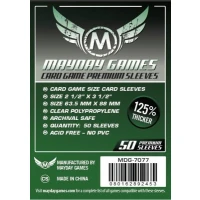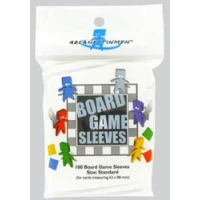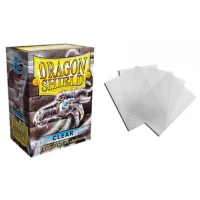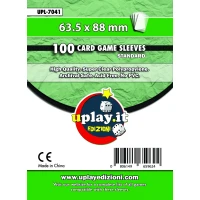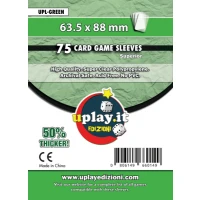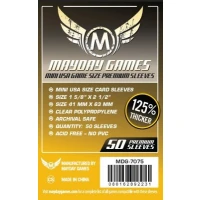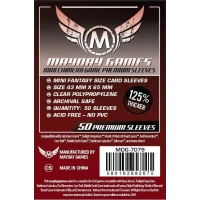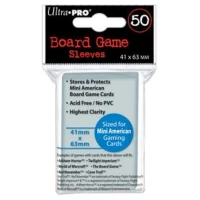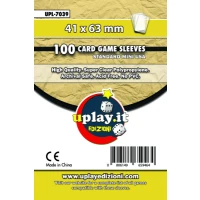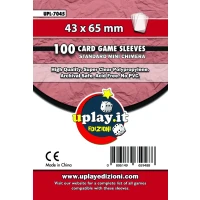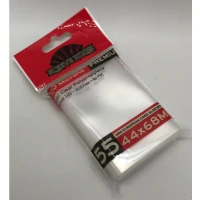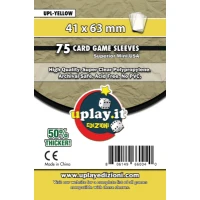

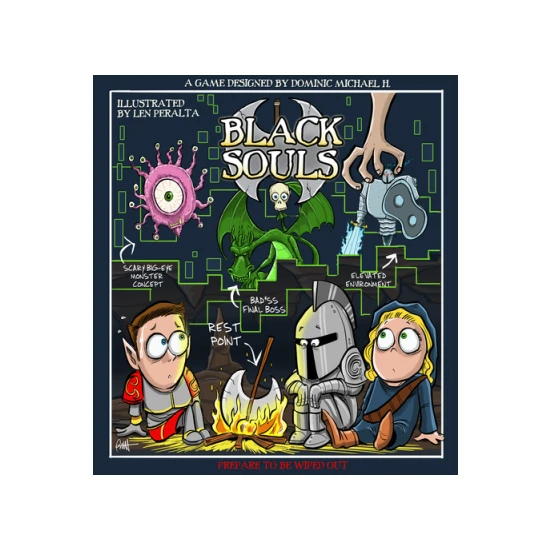
|
|
|
|
1-4
30'
10
No necessary in-game text
|
Black Souls
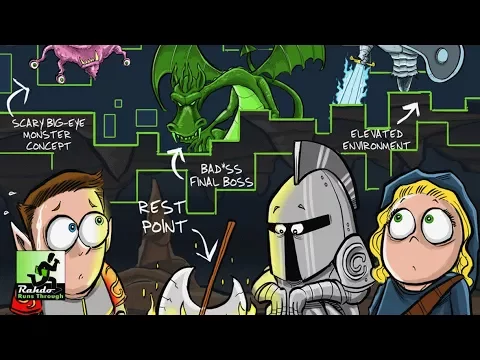
 Available in an external warehouse.
Available in an external warehouse.Shipping in about 3/7 days
Sale Price
- 81 cards (63.0mmx88.0mm)
- 25 cards (41.0mmx63.0mm)
Medieval Lords' latest game title Black Souls has achieved international acclaim! Hailed as one of the toughest games ever, it has attracted millions of hardcore gamers. Of course, just being difficult would not have made it the success it has become - while being very challenging, Black Souls is also known to be balanced as a fair game that rewards excellent playing skills. Alas, the game studio is heavily short staffed and the management is looking to expand its development team for Black Souls' expansion. You have been given a once-in-a-lifetime opportunity to be hired by Medieval Lords as a level designer, an integral part of Black Souls' development team! As one of the finalist candidates, you must prove your designing skills under the judging eyes of your future employers in an 'Early Beta Access' trial to create a level that best reflects the spirit of Black Souls - a very difficult, yet fair game. A group of seasoned playtesters will be sent to try out your carefully designed level, and provide feedback on whether they like or dislike it. If the level is too easy, they would not feel challenged at all. If it is too hard, they would all be killed and find it unfair. Who will be the final candidate to be inducted into the ranks of Medieval Lords? This is a game about making a game! How To Play: The Lead Designer performs a blind draw from an opaque bag to take out an amount of game tiles (also known as Assets) equal to the number of players. These game tiles are placed in the middle of the play area and is known as the Asset Pool. Players then secretly select one of their 5 Bid Cards (valued 1 - 5) and reveal them at the same time. The highest value card played allows its owner to go first in selecting a game Asset, followed by the next highest value played and so on. On each Bidding Card, there is also a secondary effect that will occur. Much of the game's strategies revolve around cleverly using these effects at the right time. The value 1 card allows a player to bring back 2 dead party members, while the value 2 card allows a player to draw a Playtester card and add extra cubes to his party. Value 3 allows one to take back all his previously played Bid Cards, including that card itself. Value 4 allows one to swap out up to 2 tiles before Asset choosing begins, and value 5 has no secondary effect. On a tie (more than 1 player playing the same value Bid Card), both players go last! (Even if they both played a 5) On top of that, their Bid Cards' secondary effects do not trigger too! All players do have a Glitch skill they can each use once per game, which either allows them to avoid losing the effect of secondary abilities during such a tie OR completely ignore all deaths during the Exploration phase. Between the tied players, the play order follows the previous turn. If player A and B tied, and player B had her turn before A in the previous turn, she will continue to have her turn before A in this new turn. If players tie in the first turn of the game, the play order ascends from the youngest first. The Bid Card value 3's secondary effect will always trigger, even if tied. After each player has chosen an Asset from the Asset Pool, the players must immediately place their new tile onto their individual Design Boards, within the boundary of their 'Map' area. New tiles must be placed completely flat, and at least one edge must completely touch the previously placed tile. The various tiles have a large variety in shape and size. It is also important to note that the tiles belong to three main types - Cave, Outdoor, and Dungeon. Players will be rewarded if they can chain and connect more tiles of the same type together. When all new tiles have been placed, the Exploration phase occurs. This is when each player's party advances into the new tile. Indicate this by moving the players' Party Tokens onto the new tiles to show which tiles are being resolved. Typically all tiles in the game have 4 values - The first value shows how many fighters will die in that tile, the second shows how many mages will die, the third shows how many healers will die and the fourth shows how difficult the tile is. Players choose to resolve only ONE of the first three values. Clever decision making is important to minimize death across the various classes in each party. Points are alloted at the end of the game for the most difficult level designed among the players. Points are also given for having more survivors in your playtesting party. To win the game, you must design as difficult a level as you can, but still balance it enough that there are as many survivors in your party as possible.
| Mechanics: | Auction/Bidding Modular Board Pattern Recognition Set Collection Tile Placement |
| Categories: | Adventure Exploration Medieval Themed |
| Alternative names: | |
| BARCODE: | 680140591226 |
| In 3 wishlists This was seen 11760 times | |
- 81 cards (63.0mmx88.0mm)
- 25 cards (41.0mmx63.0mm)
Medieval Lords' latest game title Black Souls has achieved international acclaim! Hailed as one of the toughest games ever, it has attracted millions of hardcore gamers. Of course, just being difficult would not have made it the success it has become - while being very challenging, Black Souls is also known to be balanced as a fair game that rewards excellent playing skills. Alas, the game studio is heavily short staffed and the management is looking to expand its development team for Black Souls' expansion. You have been given a once-in-a-lifetime opportunity to be hired by Medieval Lords as a level designer, an integral part of Black Souls' development team! As one of the finalist candidates, you must prove your designing skills under the judging eyes of your future employers in an 'Early Beta Access' trial to create a level that best reflects the spirit of Black Souls - a very difficult, yet fair game. A group of seasoned playtesters will be sent to try out your carefully designed level, and provide feedback on whether they like or dislike it. If the level is too easy, they would not feel challenged at all. If it is too hard, they would all be killed and find it unfair. Who will be the final candidate to be inducted into the ranks of Medieval Lords? This is a game about making a game! How To Play: The Lead Designer performs a blind draw from an opaque bag to take out an amount of game tiles (also known as Assets) equal to the number of players. These game tiles are placed in the middle of the play area and is known as the Asset Pool. Players then secretly select one of their 5 Bid Cards (valued 1 - 5) and reveal them at the same time. The highest value card played allows its owner to go first in selecting a game Asset, followed by the next highest value played and so on. On each Bidding Card, there is also a secondary effect that will occur. Much of the game's strategies revolve around cleverly using these effects at the right time. The value 1 card allows a player to bring back 2 dead party members, while the value 2 card allows a player to draw a Playtester card and add extra cubes to his party. Value 3 allows one to take back all his previously played Bid Cards, including that card itself. Value 4 allows one to swap out up to 2 tiles before Asset choosing begins, and value 5 has no secondary effect. On a tie (more than 1 player playing the same value Bid Card), both players go last! (Even if they both played a 5) On top of that, their Bid Cards' secondary effects do not trigger too! All players do have a Glitch skill they can each use once per game, which either allows them to avoid losing the effect of secondary abilities during such a tie OR completely ignore all deaths during the Exploration phase. Between the tied players, the play order follows the previous turn. If player A and B tied, and player B had her turn before A in the previous turn, she will continue to have her turn before A in this new turn. If players tie in the first turn of the game, the play order ascends from the youngest first. The Bid Card value 3's secondary effect will always trigger, even if tied. After each player has chosen an Asset from the Asset Pool, the players must immediately place their new tile onto their individual Design Boards, within the boundary of their 'Map' area. New tiles must be placed completely flat, and at least one edge must completely touch the previously placed tile. The various tiles have a large variety in shape and size. It is also important to note that the tiles belong to three main types - Cave, Outdoor, and Dungeon. Players will be rewarded if they can chain and connect more tiles of the same type together. When all new tiles have been placed, the Exploration phase occurs. This is when each player's party advances into the new tile. Indicate this by moving the players' Party Tokens onto the new tiles to show which tiles are being resolved. Typically all tiles in the game have 4 values - The first value shows how many fighters will die in that tile, the second shows how many mages will die, the third shows how many healers will die and the fourth shows how difficult the tile is. Players choose to resolve only ONE of the first three values. Clever decision making is important to minimize death across the various classes in each party. Points are alloted at the end of the game for the most difficult level designed among the players. Points are also given for having more survivors in your playtesting party. To win the game, you must design as difficult a level as you can, but still balance it enough that there are as many survivors in your party as possible.
| Mechanics: | Auction/Bidding Modular Board Pattern Recognition Set Collection Tile Placement |
| Categories: | Adventure Exploration Medieval Themed |
| Alternative names: | |
| BARCODE: | 680140591226 |
| In 3 wishlists This was seen 11760 times | |

































